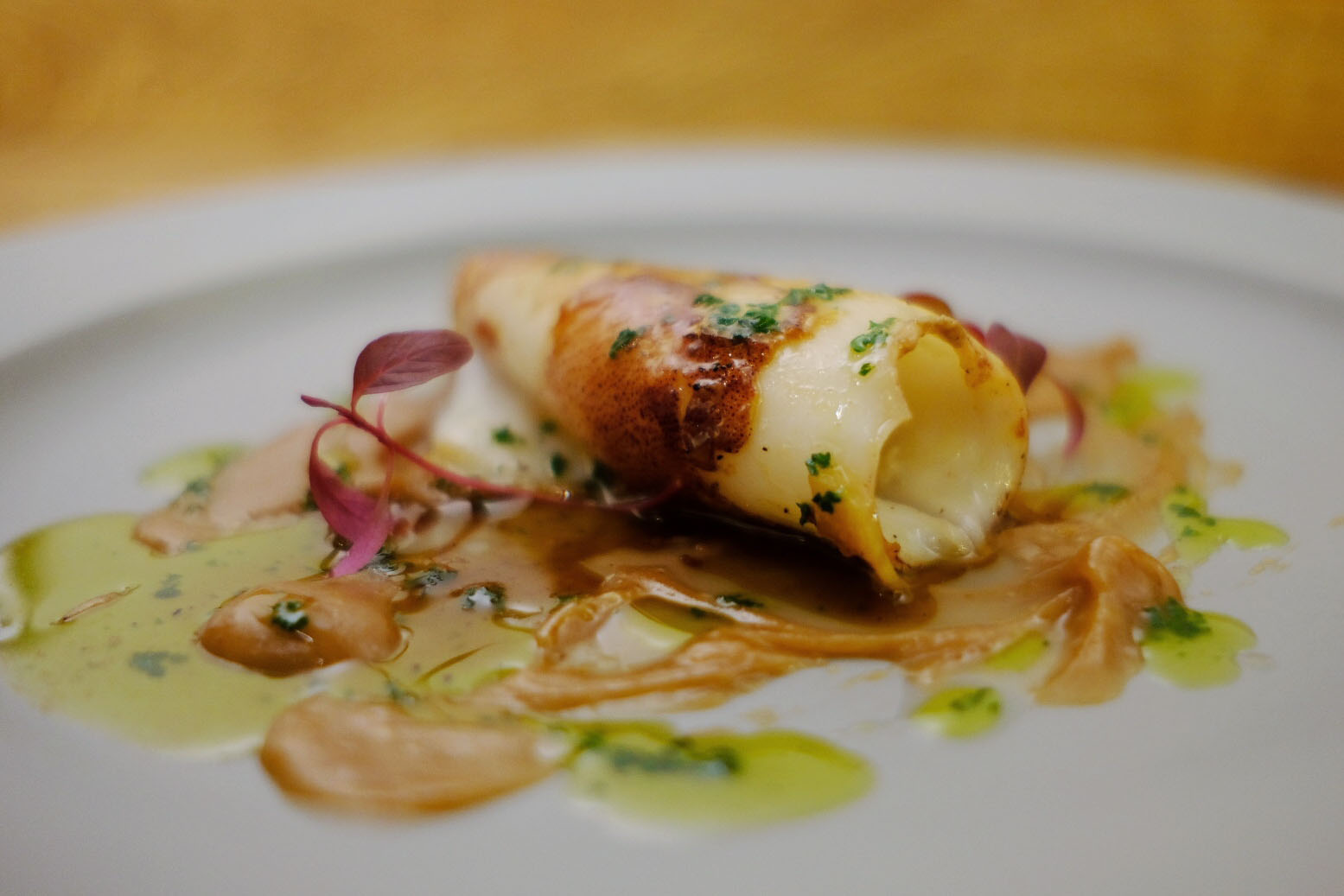The narrow alleys surrounding Karasumori Shrine in Tokyo's Shinbashi neighborhood are crammed with tiny bars filled with salarymen making merry on a Friday night. In this milieu of wooden doors and shadowy interiors, the cobalt blue-framed glass storefront of recently opened Txiki Plaka draws the eye like a moth to a porch light. However, the bar stands out for more than its cheerful decor: Txiki Plaka specializes in pintxos, the unique version of tapas found in the Basque region of northern Spain.
Tapas became all the rage in the early 2000s, when the Japanese government approved the import of cured Spanish hams. While the city has no shortage of Iberian eateries, Basque cuisine is relatively new to the scene. But with the opening of Txiki Plaka (which means "small plates" in Basque) — followed by Eneko Bar, three-Michelin-starred Basque chef Eneko Atxa's casual outpost in Nishi-Azabu — Tokyo may be ripe for a pintxos revolution.
Traditionally, the word "pintxo" refers to a snack held together with a toothpick, typically enjoyed with a glass of the local txakoli wine. Pintxos culture developed during the 1930s in the cities of San Sebastian and Bilbao, when Spanish aristocrats introduced the custom of serving drinks with a slice of bread topped with savory treats such as sliced jamon serrano (a type of dry-cured Spanish ham). Since then, the cuisine has evolved into an exciting culinary art form that focuses on quality products. Pintxos can be as simple as the classic gilda — anchovies, olives and pickled peppers — or as complex as foie gras tempura served with lobster-filled dried strawberries.



















With your current subscription plan you can comment on stories. However, before writing your first comment, please create a display name in the Profile section of your subscriber account page.